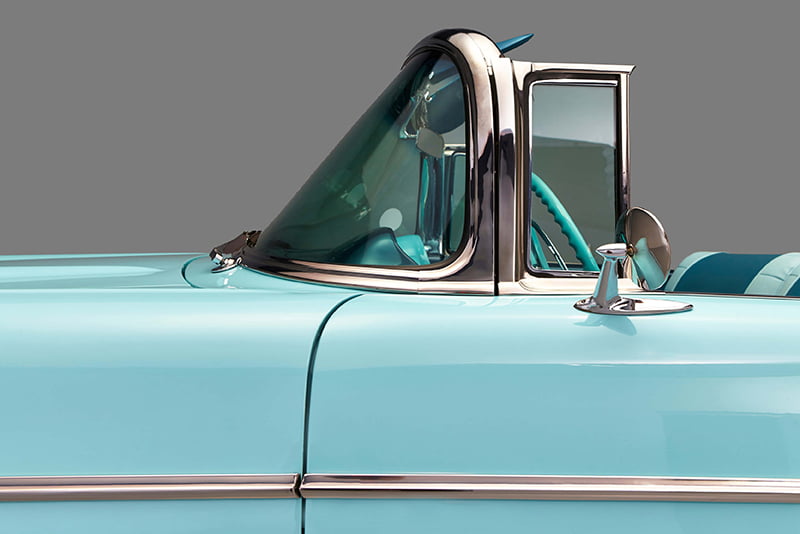Fancy driving with the wind in your hair on a warm summer’s day? A long time ago, someone else once did too – but who exactly invented the convertible car?
In this day and age, people usually buy a convertible car for one of three reasons: they like the idea of open top motoring, they like the idea of other people thinking that they like the idea of open top motoring, or because the car that they really want is only available as a convertible.
Regardless of where you stand on cruising sans roof, our love of the open road without restriction goes further back than many people initially realise, so where did it all begin?
The Inception Of Convertible Culture
It may surprise you to learn that technically speaking, convertible cars were around much earlier than the traditional hard roof models that many of us now own today. In fact, convertibles are also known by terms such as drop top, open top and cabriolet – with the latter quite literally meaning “a light, two-wheeled, one-horse carriage with a folding top, capable of seating two persons”.
You see, after horse drawn carriages came the phaetons, roadsters and the touring cars. In the early days, roofs that were convertible or detachable were the norm. It wasn’t until the 1920’s that steel bodies began to be mass produced, and closed cars became an option available to the average buyer. As this modification continued being built standard into vehicles, the first retractable top was then developed in 1922. The initial design was invented by Ben P. Ellerbeck, and while the hardtop was operated manually on a Hudson coupe, it never saw production. Just five years later, that feature was brought to market by many manufacturers like Buick, Chrysler, Cadillac, Lincoln, and other industry titans of the time. Fully open cars began to disappear from the mainstream automotive marketplace, as having a closed roof was both practical and a sign of luxury.
However, demand for convertibles came roaring back as a direct result of World War II. American soldiers in France and the United Kingdom were exposed to the smaller roadster models that were not available back home in the United States, such as the MG Midget and the Triumph Roadster. As a result, American automotive manufacturers produced a new range of models such as the Studebaker Lark and the Oldsmobile 98 with the option of being a convertible, as a means to meet market demand from returning soldiers.
This resurgence only lasted twenty years at best though, as the 1970’s saw a shift in demand once more. Motoring enthusiasts began to steer away from convertibles once again, thanks to increased travel speeds and vehicle crash safety standards on roads in the United States. Suddenly, driving a convertible on the open road was loud and windy, and the “feeling” was replaced with sunroofs and air conditioning systems. After the last Cadillac Eldorado was produced in 1976, the only convertible cars sold in the United States were imported until 1982.
Thankfully, in the 21st century people love convertibles not just for how they run, but what they symbolise – freedom, adventure, sunshine. After all, there’s a reason why California is listed as one of the top five American states for owning a convertible in this day and age. Hollywood productions not only know about this symbolism, but in turn continue to capitalise on it: think “Thelma and Louise”, “The Graduate” and “Ferris Bueller’s Day Off”.
Modern convertibles can also be symbols of status, thanks to those designed and manufactured by the likes of Bentley, Aston Martin, or Mercedes. While the concept is still the same, additional luxury features can also include automated climate control, heated seats, keyless ignition, even built-in wind deflectors. Needless to say, convertible cars have certainly come a long way.
Get To Know Your Local Classic Car Expert
Finding a fellow vintage auto enthusiast can feel a bit like finding a needle in a haystack, but rest assured that Classic’s Garage understands the thrill more than most. Having spent forty years collecting anything and everything from matchbox cars to hub caps, he’s successfully followed his passion to source, collect and stock beautiful and low mileage classic automobiles from around the world. With extensive experience in the automotive industry, it was only a matter of time before Wayne expanded on his love of vintage, iconic vehicles to share his knowledge and passion with the public.
Although his passion is for automobiles built before 1978, with a particular love for Buicks, Cadillacs, Lincolns, Oldsmobiles and even Fords, Wayne is just as passionate about the stories of the owners. Just like the cars, he has found that his fellow classic car enthusiasts all have wildly different attractions and logic behind their passion or hobby, and this often translates into how the car is presented. If it’s even remotely different, rare or just plain unusual, Wayne will overcome the relevant logistical and geographical challenges of bringing the cars to his showroom in Australia.
Classic’s Garage is a showroom conveniently located at Seventeen Mile Rocks, that specialises in the restoration and sales of vintage automobiles. If you’re on the hunt for Brisbane classic cars – quite simply, Wayne is your man. If you would like to arrange a viewing or inspect any other of our classic vehicles, please get in touch with us today.

